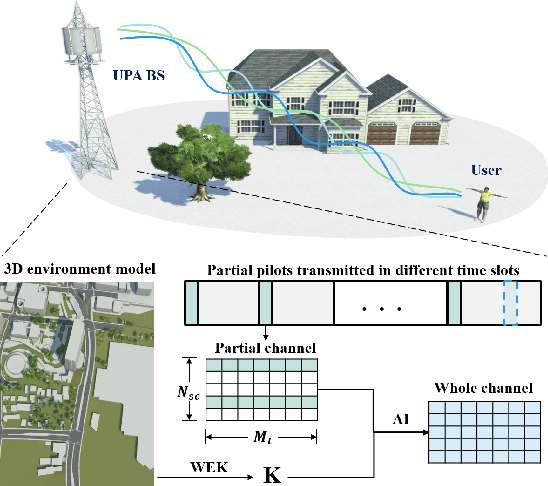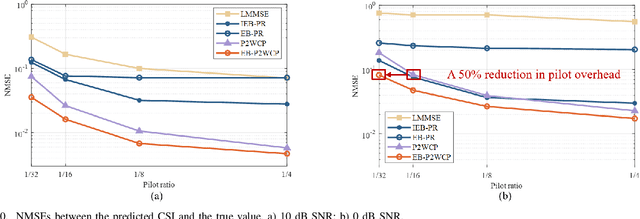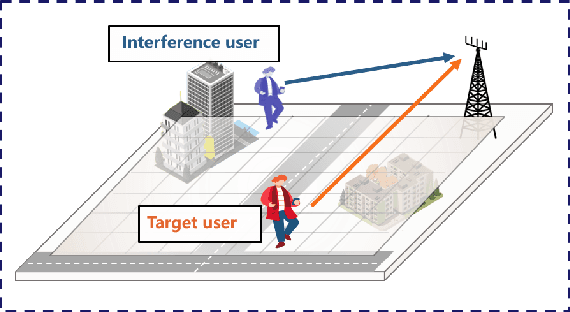Zhen Zhang
The Bradley Department of Electrical and Computer Engineering, Virginia Tech, Blacksburg, Virginia, USA
Forestpest-YOLO: A High-Performance Detection Framework for Small Forestry Pests
Oct 01, 2025



Abstract:Detecting agricultural pests in complex forestry environments using remote sensing imagery is fundamental for ecological preservation, yet it is severely hampered by practical challenges. Targets are often minuscule, heavily occluded, and visually similar to the cluttered background, causing conventional object detection models to falter due to the loss of fine-grained features and an inability to handle extreme data imbalance. To overcome these obstacles, this paper introduces Forestpest-YOLO, a detection framework meticulously optimized for the nuances of forestry remote sensing. Building upon the YOLOv8 architecture, our framework introduces a synergistic trio of innovations. We first integrate a lossless downsampling module, SPD-Conv, to ensure that critical high-resolution details of small targets are preserved throughout the network. This is complemented by a novel cross-stage feature fusion block, CSPOK, which dynamically enhances multi-scale feature representation while suppressing background noise. Finally, we employ VarifocalLoss to refine the training objective, compelling the model to focus on high-quality and hard-to-classify samples. Extensive experiments on our challenging, self-constructed ForestPest dataset demonstrate that Forestpest-YOLO achieves state-of-the-art performance, showing marked improvements in detecting small, occluded pests and significantly outperforming established baseline models.
WebSailor-V2: Bridging the Chasm to Proprietary Agents via Synthetic Data and Scalable Reinforcement Learning
Sep 16, 2025Abstract:Transcending human cognitive limitations represents a critical frontier in LLM training. Proprietary agentic systems like DeepResearch have demonstrated superhuman capabilities on extremely complex information-seeking benchmarks such as BrowseComp, a feat previously unattainable. We posit that their success hinges on a sophisticated reasoning pattern absent in open-source models: the ability to systematically reduce extreme uncertainty when navigating vast information landscapes. Based on this insight, we introduce WebSailor, a complete post-training methodology designed to instill this crucial capability. Our approach involves generating novel, high-uncertainty tasks through structured sampling and information obfuscation, RFT cold start, and an efficient agentic RL training algorithm, Duplicating Sampling Policy Optimization (DUPO). With this integrated pipeline, WebSailor significantly outperforms all open-source agents in complex information-seeking tasks, matching proprietary agents' performance and closing the capability gap.
WebResearcher: Unleashing unbounded reasoning capability in Long-Horizon Agents
Sep 16, 2025Abstract:Recent advances in deep-research systems have demonstrated the potential for AI agents to autonomously discover and synthesize knowledge from external sources. In this paper, we introduce WebResearcher, a novel framework for building such agents through two key components: (1) WebResearcher, an iterative deep-research paradigm that reformulates deep research as a Markov Decision Process, where agents periodically consolidate findings into evolving reports while maintaining focused workspaces, overcoming the context suffocation and noise contamination that plague existing mono-contextual approaches; and (2) WebFrontier, a scalable data synthesis engine that generates high-quality training data through tool-augmented complexity escalation, enabling systematic creation of research tasks that bridge the gap between passive knowledge recall and active knowledge construction. Notably, we find that the training data from our paradigm significantly enhances tool-use capabilities even for traditional mono-contextual methods. Furthermore, our paradigm naturally scales through parallel thinking, enabling concurrent multi-agent exploration for more comprehensive conclusions. Extensive experiments across 6 challenging benchmarks demonstrate that WebResearcher achieves state-of-the-art performance, even surpassing frontier proprietary systems.
Towards General Agentic Intelligence via Environment Scaling
Sep 16, 2025Abstract:Advanced agentic intelligence is a prerequisite for deploying Large Language Models in practical, real-world applications. Diverse real-world APIs demand precise, robust function-calling intelligence, which needs agents to develop these capabilities through interaction in varied environments. The breadth of function-calling competence is closely tied to the diversity of environments in which agents are trained. In this work, we scale up environments as a step towards advancing general agentic intelligence. This gives rise to two central challenges: (i) how to scale environments in a principled manner, and (ii) how to effectively train agentic capabilities from experiences derived through interactions with these environments. To address these, we design a scalable framework that automatically constructs heterogeneous environments that are fully simulated, systematically broadening the space of function-calling scenarios. We further adapt a two-phase agent fine-tuning strategy: first endowing agents with fundamental agentic capabilities, then specializing them for domain-specific contexts. Extensive experiments on agentic benchmarks, tau-bench, tau2-Bench, and ACEBench, demonstrate that our trained model, AgentScaler, significantly enhances the function-calling capability of models.
Scaling Agents via Continual Pre-training
Sep 16, 2025Abstract:Large language models (LLMs) have evolved into agentic systems capable of autonomous tool use and multi-step reasoning for complex problem-solving. However, post-training approaches building upon general-purpose foundation models consistently underperform in agentic tasks, particularly in open-source implementations. We identify the root cause: the absence of robust agentic foundation models forces models during post-training to simultaneously learn diverse agentic behaviors while aligning them to expert demonstrations, thereby creating fundamental optimization tensions. To this end, we are the first to propose incorporating Agentic Continual Pre-training (Agentic CPT) into the deep research agents training pipeline to build powerful agentic foundational models. Based on this approach, we develop a deep research agent model named AgentFounder. We evaluate our AgentFounder-30B on 10 benchmarks and achieve state-of-the-art performance while retains strong tool-use ability, notably 39.9% on BrowseComp-en, 43.3% on BrowseComp-zh, and 31.5% Pass@1 on HLE.
Digital Twin Channel-Aided CSI Prediction: A Environment-based Subspace Extraction Approach for Achieving Low Overhead and Robustness
Aug 07, 2025



Abstract:To meet the robust and high-speed communication requirements of the sixth-generation (6G) mobile communication system in complex scenarios, sensing- and artificial intelligence (AI)-based digital twin channel (DTC) techniques become a promising approach to reduce system overhead. In this paper, we propose an environment-specific channel subspace basis (EB)-aided partial-to-whole channel state information (CSI) prediction method (EB-P2WCP) for realizing DTC-enabled low-overhead channel prediction. Specifically, EB is utilized to characterize the static properties of the electromagnetic environment, which is extracted from the digital twin map, serving as environmental information prior to the prediction task. Then, we fuse EB with real-time estimated local CSI to predict the entire spatial-frequency domain channel for both the present and future time instances. Hence, an EB-based partial-to-whole CSI prediction network (EB-P2WNet) is designed to achieve a robust channel prediction scheme in various complex scenarios. Simulation results indicate that incorporating EB provides significant benefits under low signal-to-noise ratio and pilot ratio conditions, achieving a reduction of up to 50% in pilot overhead. Additionally, the proposed method maintains robustness against multi-user interference, tolerating 3-meter localization errors with only a 0.5 dB NMSE increase, and predicts CSI for the next channel coherent time within 1.3 milliseconds.
Behavior-Specific Filtering for Enhanced Pig Behavior Classification in Precision Livestock Farming
Jul 28, 2025Abstract:This study proposes a behavior-specific filtering method to improve behavior classification accuracy in Precision Livestock Farming. While traditional filtering methods, such as wavelet denoising, achieved an accuracy of 91.58%, they apply uniform processing to all behaviors. In contrast, the proposed behavior-specific filtering method combines Wavelet Denoising with a Low Pass Filter, tailored to active and inactive pig behaviors, and achieved a peak accuracy of 94.73%. These results highlight the effectiveness of behavior-specific filtering in enhancing animal behavior monitoring, supporting better health management and farm efficiency.
Emotion Recognition from Skeleton Data: A Comprehensive Survey
Jul 24, 2025Abstract:Emotion recognition through body movements has emerged as a compelling and privacy-preserving alternative to traditional methods that rely on facial expressions or physiological signals. Recent advancements in 3D skeleton acquisition technologies and pose estimation algorithms have significantly enhanced the feasibility of emotion recognition based on full-body motion. This survey provides a comprehensive and systematic review of skeleton-based emotion recognition techniques. First, we introduce psychological models of emotion and examine the relationship between bodily movements and emotional expression. Next, we summarize publicly available datasets, highlighting the differences in data acquisition methods and emotion labeling strategies. We then categorize existing methods into posture-based and gait-based approaches, analyzing them from both data-driven and technical perspectives. In particular, we propose a unified taxonomy that encompasses four primary technical paradigms: Traditional approaches, Feat2Net, FeatFusionNet, and End2EndNet. Representative works within each category are reviewed and compared, with benchmarking results across commonly used datasets. Finally, we explore the extended applications of emotion recognition in mental health assessment, such as detecting depression and autism, and discuss the open challenges and future research directions in this rapidly evolving field.
SharpZO: Hybrid Sharpness-Aware Vision Language Model Prompt Tuning via Forward-Only Passes
Jun 26, 2025Abstract:Fine-tuning vision language models (VLMs) has achieved remarkable performance across various downstream tasks; yet, it requires access to model gradients through backpropagation (BP), making them unsuitable for memory-constrained, inference-only edge devices. To address this limitation, previous work has explored various BP-free fine-tuning methods. However, these approaches often rely on high-variance evolutionary strategies (ES) or zeroth-order (ZO) optimization, and often fail to achieve satisfactory performance. In this paper, we propose a hybrid Sharpness-aware Zeroth-order optimization (SharpZO) approach, specifically designed to enhance the performance of ZO VLM fine-tuning via a sharpness-aware warm-up training. SharpZO features a two-stage optimization process: a sharpness-aware ES stage that globally explores and smooths the loss landscape to construct a strong initialization, followed by a fine-grained local search via sparse ZO optimization. The entire optimization relies solely on forward passes. Detailed theoretical analysis and extensive experiments on CLIP models demonstrate that SharpZO significantly improves accuracy and convergence speed, achieving up to 7% average gain over state-of-the-art forward-only methods.
Efficient Federated Learning with Encrypted Data Sharing for Data-Heterogeneous Edge Devices
Jun 25, 2025Abstract:As privacy protection gains increasing importance, more models are being trained on edge devices and subsequently merged into the central server through Federated Learning (FL). However, current research overlooks the impact of network topology, physical distance, and data heterogeneity on edge devices, leading to issues such as increased latency and degraded model performance. To address these issues, we propose a new federated learning scheme on edge devices that called Federated Learning with Encrypted Data Sharing(FedEDS). FedEDS uses the client model and the model's stochastic layer to train the data encryptor. The data encryptor generates encrypted data and shares it with other clients. The client uses the corresponding client's stochastic layer and encrypted data to train and adjust the local model. FedEDS uses the client's local private data and encrypted shared data from other clients to train the model. This approach accelerates the convergence speed of federated learning training and mitigates the negative impact of data heterogeneity, making it suitable for application services deployed on edge devices requiring rapid convergence. Experiments results show the efficacy of FedEDS in promoting model performance.
 Add to Chrome
Add to Chrome Add to Firefox
Add to Firefox Add to Edge
Add to Edge